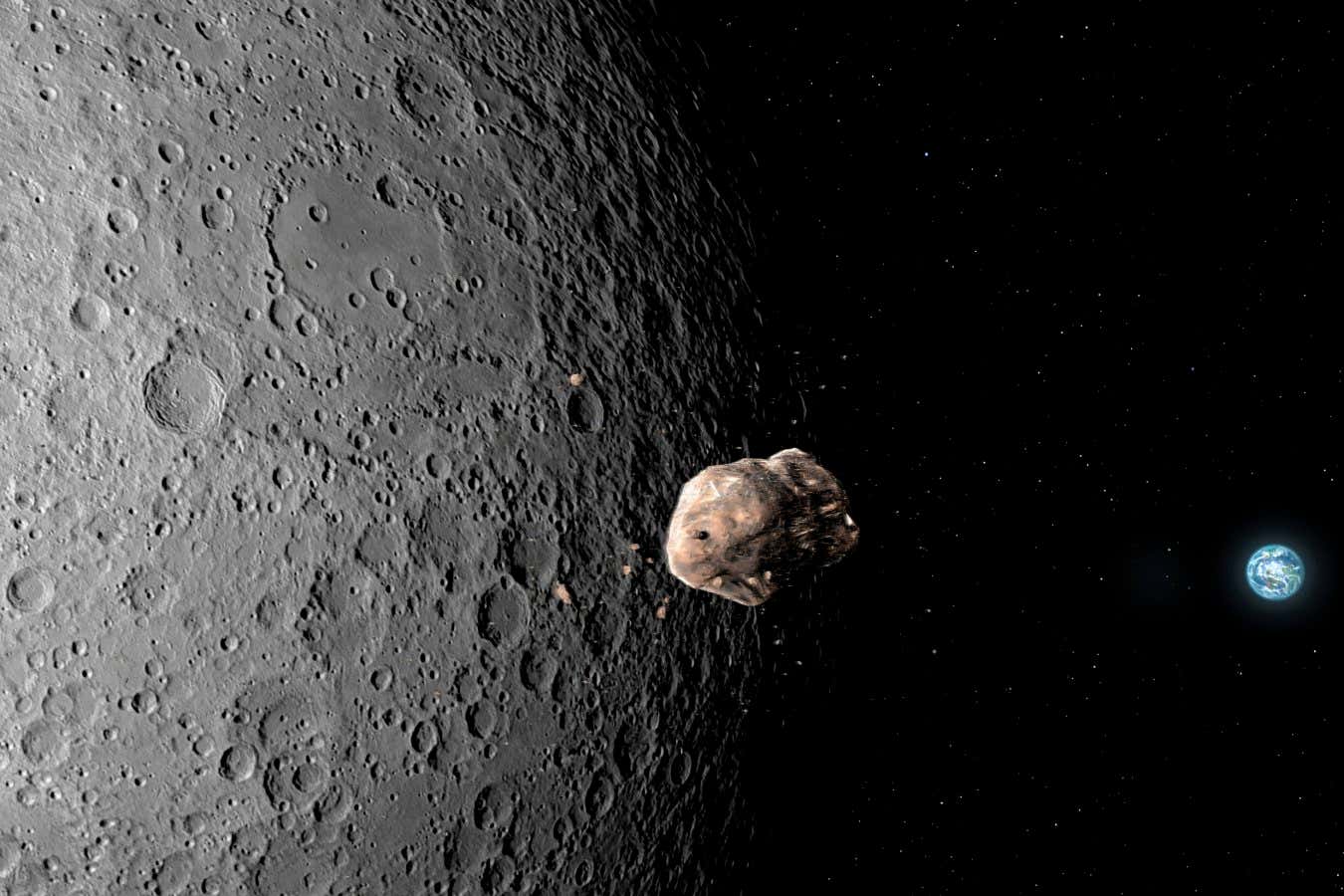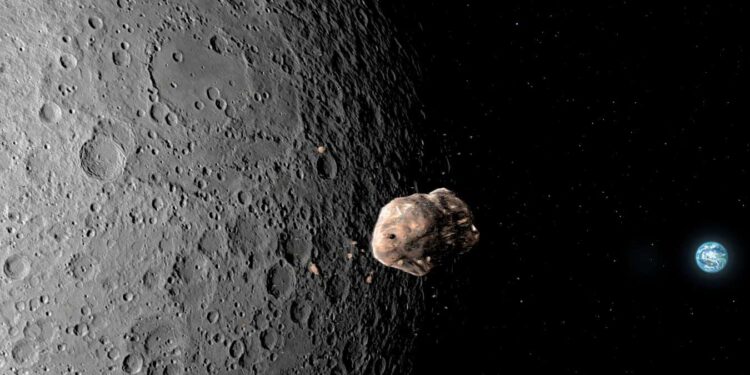
Asteroid 2024 YR4 could result in the largest impact on the moon for the past 5000 years
MARK GARLICK/SCIENCE PHOTO LIBRARY/Getty Images
The asteroid 2024 YR4, which was once thought to be on a collision course with Earth, may still pose a threat to the planet. There is still a chance the space rock could smash into the moon, and the resulting explosion could shower Earth with a cloud of satellite-destroying shrapnel.
Astronomers have been tracking the building-sized asteroid since it was discovered in December 2024, when initial predictions of its path raised the possibility of a collision with Earth in 2032. Such a collision would have released enough explosive power to destroy a city, but, thankfully, follow-up observations showed that 2024 YR4 will almost certainly miss our planet.
The chance of a collision with the moon, however, has slowly been increasing, and now stands at 4.3 per cent based on the last observations taken before the asteroid flew out of view of our telescopes until 2028. And according to Paul Wiegert at the University of Western Ontario in Canada and his colleagues, such a collision could still cause significant damage to Earth’s satellites.
“We were a little bit surprised at the possibility of there being a substantial amount of material at the Earth,” says Wiegert. “Intuitively, the Earth is actually quite a small target when seen from the moon, and so your intuition is that not very much material would actually hit the Earth, but it turns out that the Earth’s gravity can focus that material under certain conditions.”
Wiegert and his team calculated that 2024 YR4 could create a kilometre-wide crater on the moon – the largest lunar impact for at least the past 5000 years, though relatively small compared with a typical crater. An impact of this size would eject a cloud of debris into space, and by simulating its potential behaviour 10,000 times, the team found that this could cause Earth’s satellites to experience a level of collisions equivalent to what we would expect to see in years or even decades, but occurring in just a few days.
While these collisions might not be enough to take out entire satellites, they could cause anomalous readings due to electrical flashes, though it is hard to model exactly how damaging it will be for satellites, says Wiegert.
If we are unlucky, the effect of debris particles could be particularly bad, says Mark Burchell at the University of Kent, UK. “If they were to hit a bit of a spacecraft that was a coolant pipe, or a sensor on the spacecraft exposed to space, or an antenna, then suddenly you get a loss of that particular functionality,” he says. “You can’t go and fix a satellite. A minor problem is actually a serious problem.”
Wiegert says the results should make the world’s space agencies think about deflecting asteroids that are going to hit the moon, as well as Earth. A spokesperson from NASA’s Planetary Defense Coordination Office says its job is to “identify near-Earth objects (NEOs) that could pose an impact hazard to the Earth, so planetary defense is not solely confined to near-Earth space”, but that it would be “premature to speculate on potential response options” to 2024 YR4 hitting the moon.
Depending on how things go, we may need to act quickly. When 2024 YR4 flies back into view of Earth’s telescopes in 2028, we should be able to swiftly refine our knowledge of its exact orbital path, says Wiegert. If the odds of it hitting the moon go up, that will give us a four-year window to decide whether we need to act, he says.
Topics:
Source link : https://www.newscientist.com/article/2484769-asteroid-on-collision-course-with-moon-could-fire-shrapnel-at-earth/?utm_campaign=RSS%7CNSNS&utm_source=NSNS&utm_medium=RSS&utm_content=home
Author :
Publish date : 2025-06-18 12:38:00
Copyright for syndicated content belongs to the linked Source.










